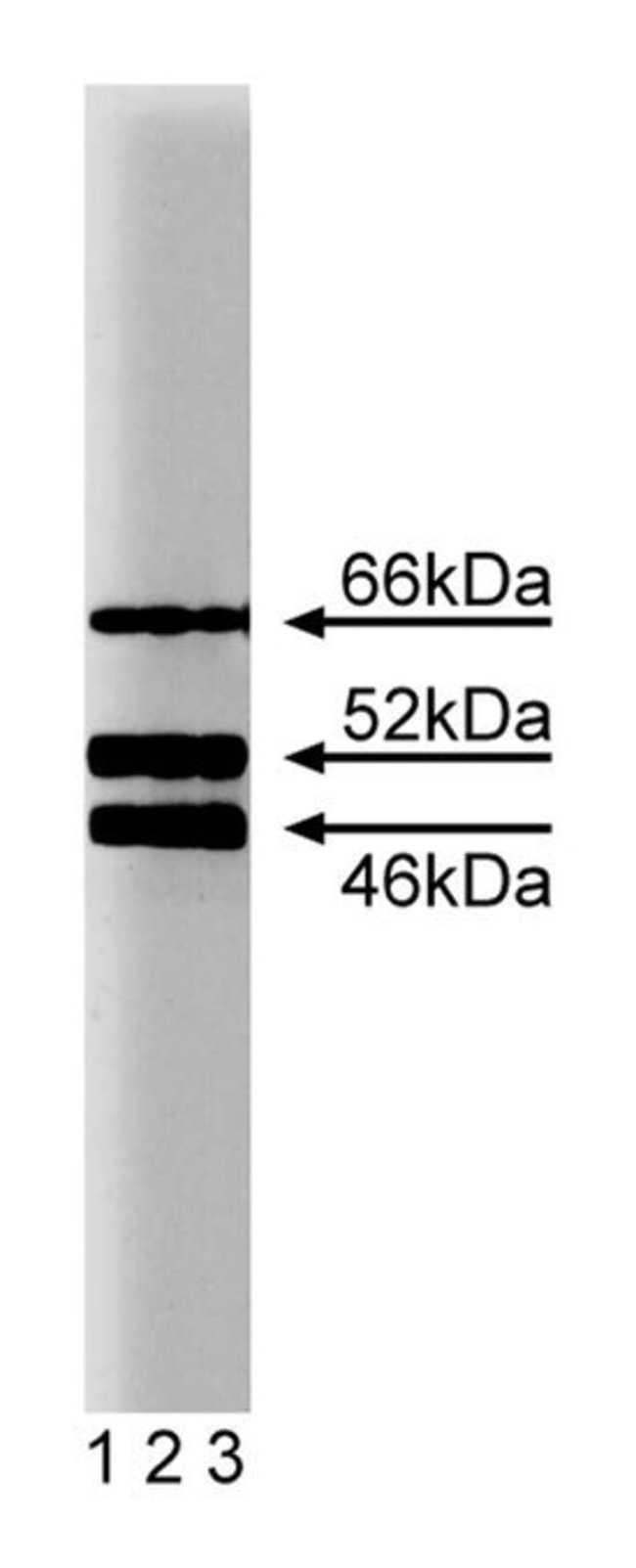SHC Mouse, Unlabeled, Clone: 30, BD, Mouse Monoclonal Antibody, Each

Details:
The mammalian SHC proteins, which are expressed as multiple isoforms (46, 52, and 66kDa), each contain a C-terminal SH2 domain and an N-terminal glycine/proline rich sequence. These proteins function as early signaling intermediates (also called adaptor proteins) which relay G protein coupled receptor (GPCR) and receptor tyrosine kinase (RTK)-induced signals via the Ras transduction pathway. To this end, the SHC proteins contain specific tyrosine residues which are phosphorylated following association with the active RTKs. Phosphorylated SHC forms a complex with the adaptor protein GRB2. Association of the SHC-GRB2 complex with the Ras guanine nucleotide exchange factor (Ras-GEF) mediates the localization of Ras-GEF to the plasma membrane. Once at the plasma membrane, Ras-GEF activates Ras by catalyzing the Ras-GTP for Ras-GDP exchange. Over-expression of SHC results in cell transformation, and phosphorylation of SHC correlates with activation of the ERK1/ERK2 kinases. The SHC proteins are mediators of signals that are essential for cell metabolism, growth, and differentiation.Immunofluorescence, Western Blotting
Additional Information
| SKU | 10135171 |
|---|---|
| UOM | Each |
| UNSPSC | 12352203 |
| Manufacturer Part Number | 610879 |

